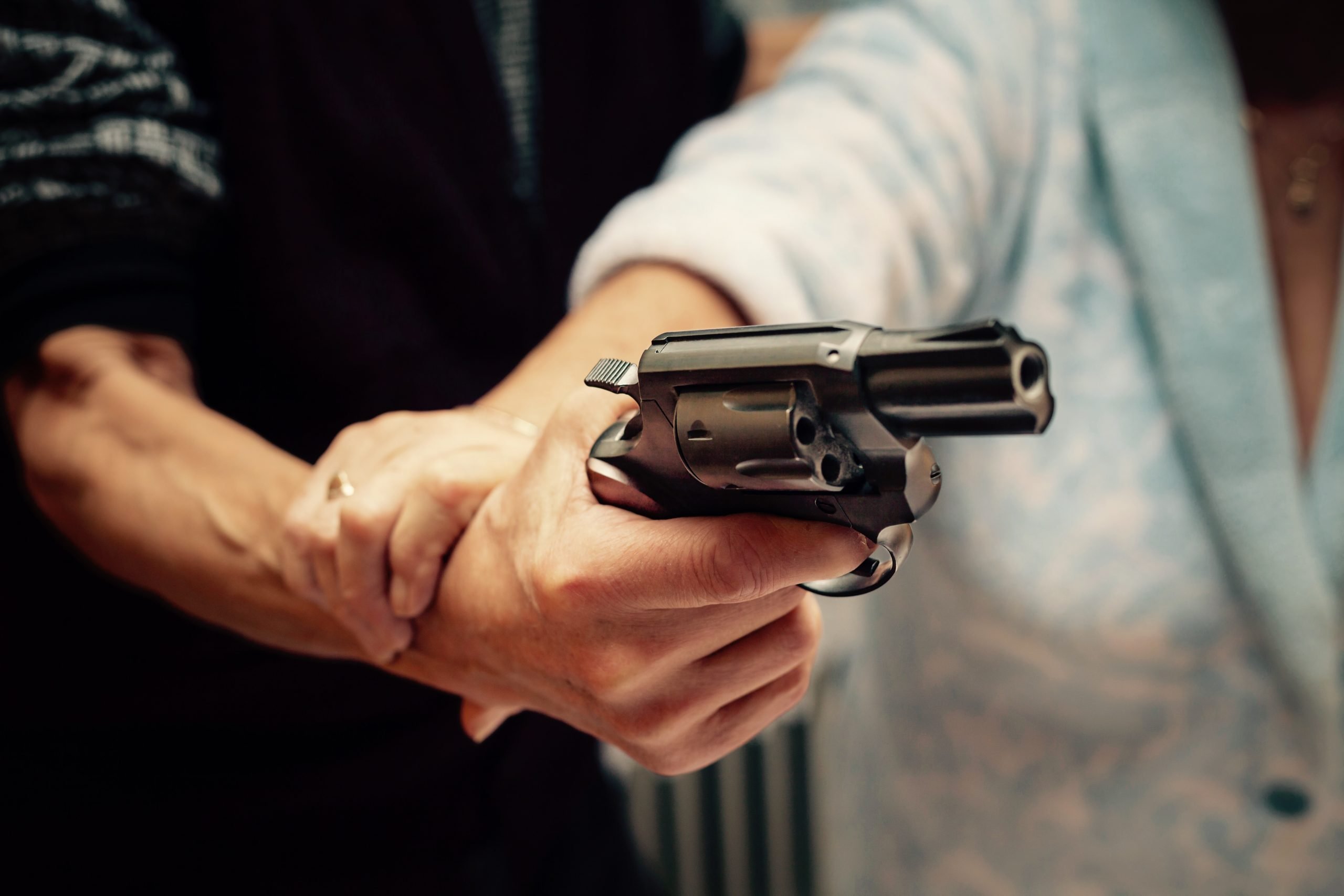The least understood aspect of the role of guns in abusive relationships is also the most pervasive.
An estimated 4.5 million women in the U.S. have been bullied or coerced with a firearm by an intimate partner. Another 1 million have survived a gunshot wound or been shot at. Those are the central findings of the first systematic review on the nonfatal use of firearms in domestic violence.
“There hasn’t been much research on guns and women in the first place,” Susan Sorenson, a professor at the University of Pennsylvania and the study’s lead author, tells The Trace. “What has been conducted tends to focus on women’s deaths. This research focuses on women’s lives.”
In 2013, the most recent year for which federal statistics are available, 473 women were fatally shot by their husband or intimate partner. When a gun is present in an abusive household, the likelihood of a homicide increases by 500 percent. But as the study explains, a gun doesn’t have to go off to play a significant role in an abusive relationship.
“If the gun is simply displayed in a hostile way, it can create an ongoing environment of threat and intimidation,” Sorenson says. “It can facilitate chronic, ongoing, physical — as well as sexual and psychological — abuse.”
Researchers call this concept “coercive control.” The Sorenson paper explains that because guns can become lethal so quickly — all that’s needed is a simple pull of a trigger — their mere presence can elicit a victim’s compliance.
When a man pulls a gun on his partner, it’s not the immediate fear that is most traumatizing. It’s the ongoing knowledge that he could do it again, and that there could come a time when a pattern of threats crosses over into bloodshed.
“There are so many relationships where there are unspoken signals — an abuser may just shoot her a look, or may point to a weapon, or pull it out — so that she is constantly aware that he has this power over her,” says Peg Dierkers, executive director of the Pennsylvania Coalition Against Domestic Violence. “It could go on for years, for decades.”
Dierkers explains that coercive control is not commonly discussed outside of advocacy circles. She attributes this fact to a perception among victims that if abuse doesn’t result in physical injury, it can’t be reported to law enforcement or social service organizations who could provide help.
“When you’re in this kind of relationship where you’ve been intimidated or bullied, and made to believe that you’re not a whole or worthy person, it’s hard to step forward and say this is what has been happening,” she says. “So often, they don’t have a label for it.”
When domestic violence does lead to contact with police, law enforcement agencies often lack protocols for identifying and reporting the role of guns in abuse. While a recent national study found that roughly three-quarters of police departments ask victims if their abuser has access to firearms, experts say this helpful line of questioning still misses a crucial aspect of abuse: how or if the gun has been used.
Similarly, Sorenson’s paper notes that domestic violence agencies have work to do in improving their awareness of the nonfatal use of firearms. Such room for improvement was made clear to the advocates at the National Domestic Violence Hotline in 2014 when the agency conducted a focused survey on the role of firearms in abusive relationships. Sixteen percent of the nearly 5,000 respondents said their partners had access to a firearm; of those, 22 percent said that their partners had used a gun to threaten or hurt them, and ten percent said that their partner had fired a gun during an argument.
The rates surprised the survey’s authors. “If the mark wasn’t made and they weren’t physically harmed, sometimes the victim doesn’t consider it domestic violence,” says Katie Ray-Jones, CEO of the National Domestic Violence Hotline. Now hotline advocates are encouraged to ask victims a series of questions about their abuser’s use of firearms.
To conduct their study, Sorenson and her colleagues reviewed more than a dozen databases and academic papers on intimate partner violence. But the nature of coercive control by firearm makes records on the phenomenon sparse, and there has been little effort on the part of well-funded agencies and organizations to close the gaps. When running their estimates of the frequency of nonfatal gun use, the team had to base their calculations on nearly 20-year-old statistics.
Sorenson argues that expanding scientific understanding of the dangers a gun poses in the hands of a domestic abuser, even when it’s not fired, could help craft policies that more effectively keep weapons away from those individuals. “It’s a topic that has not been looked at much,” Sorenson says. “But it’s really essential to women’s lives.”
[Photo: Flickr user Corey Holms]

